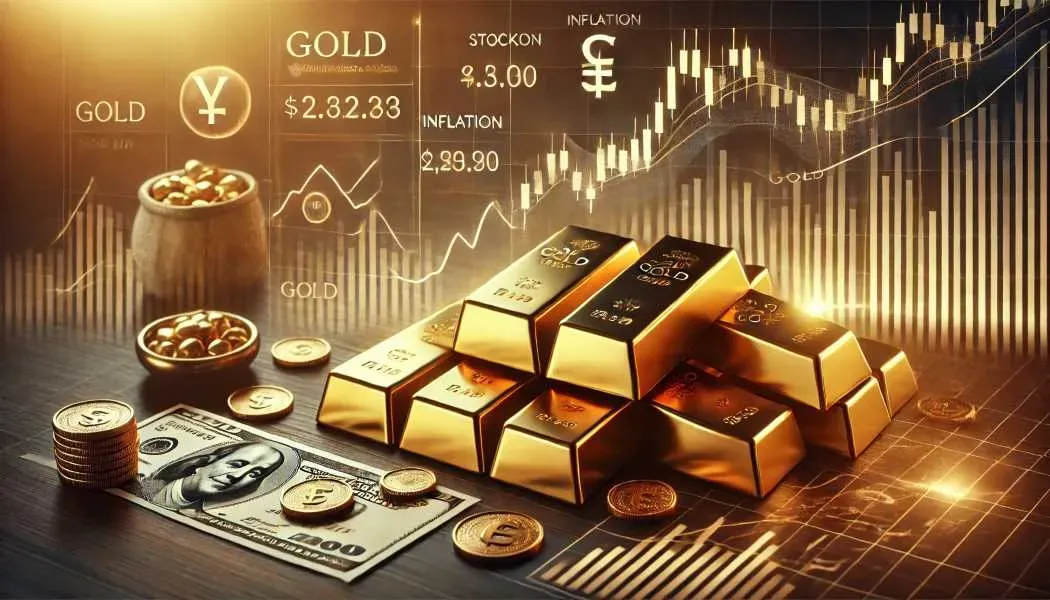
Gold Hits $3,000: What This Milestone Means for Investors and the Economy
Gold has officially broken past the $3,000 per ounce milestone for the first time in history, marking a significant moment in the financial markets. This record-breaking price has major implications not just for investors but for the broader economy. As inflation concerns, geopolitical tensions, and central bank demand continue to drive gold’s appeal, many are wondering: What does $3,000 gold mean for the future?
In this article, we’ll explore the economic effects of gold’s all-time high, its impact on global markets, and how investors should navigate this historic surge.
Why Has Gold Surpassed $3,000?
Before we examine the consequences of gold’s record price, let’s look at the factors that have propelled it to this level.
🔹 Inflation and Currency Devaluation – Persistent inflation and concerns over the weakening purchasing power of fiat currencies have driven investors toward gold as a hedge against economic instability.
🔹 Central Bank Buying – Central banks worldwide have been accumulating gold at record levels, reducing reliance on the U.S. dollar and reinforcing gold’s status as a store of value.
🔹 Geopolitical Uncertainty – Ongoing conflicts, trade tensions, and economic policy shifts have heightened market volatility, pushing gold demand higher.
🔹 Federal Reserve Interest Rate Policy – While rising interest rates can sometimes dampen gold’s appeal, expectations of rate cuts have fueled its rally, as lower rates make non-yielding assets like gold more attractive.
🔹 Stock Market Volatility – Concerns over an overvalued stock market and potential corrections have driven institutional and retail investors toward gold as a safe-haven asset.
What $3,000 Gold Means for the Global Economy
Gold’s historic rise has far-reaching consequences for the economy, impacting inflation, currency strength, and investor sentiment.
🔹 Increased Inflationary Pressures – Gold’s surge signals a lack of confidence in fiat currencies, potentially exacerbating inflation as investors shift toward tangible assets.
🔹 Weaker U.S. Dollar – A strong gold price often correlates with a weaker U.S. dollar. If gold continues rising, it could signal declining trust in the global reserve currency.
🔹 Higher Demand for Commodities – As investors move toward gold, demand for other commodities like silver and platinum may also rise, pushing prices higher.
🔹 Impact on Central Banks – Countries heavily reliant on gold reserves, such as China and Russia, may benefit from increased gold valuations, influencing their economic strategies.
How $3,000 Gold Affects Investors
For investors, gold’s record price presents both opportunities and challenges.
🔹 Safe-Haven Investment – Gold remains a reliable hedge against economic uncertainty, making it an essential component of a diversified portfolio.
🔹 Premiums on Physical Gold – With gold prices soaring, premiums on gold bars and coins have increased, making it crucial to compare prices and buy from reputable dealers.
🔹 Mining Stocks and ETFs – Gold mining stocks and exchange-traded funds (ETFs) have seen significant gains, providing alternative ways to invest in the gold boom.
🔹 Potential for Continued Growth – Analysts are now setting their sights on the next milestone: Could gold reach $4,000 per ounce in 2025?
Investment Strategies in a $3,000 Gold Market
Navigating a high-priced gold market requires a well-thought-out investment approach.
🔹 Dollar-Cost Averaging – Buying gold in increments helps mitigate risk and smooth out price fluctuations over time.
🔹 Diversification – Investing in a mix of gold bars, coins, and ETFs ensures exposure to different segments of the gold market.
🔹 Consider Silver and Platinum – With gold prices high, other precious metals like silver and platinum may offer alternative investment opportunities.
Is Now the Time to Buy, Sell, or Hold Gold?
With gold at an all-time high, investors are questioning whether to buy, sell, or hold.
🔹 Buying Gold – For those who believe gold will continue climbing, now may still be a good time to enter the market.
🔹 Selling Gold – If locking in profits is the goal, selling some holdings could be a strategic move, especially if gold approaches the next key milestone of $3,500 or $4,000.
🔹 Holding Gold – Many investors choose to hold their gold as a long-term hedge against economic instability.
The Future of Gold After $3,000
Gold breaking the $3,000 mark is a historic moment that underscores deep-seated economic concerns, shifting market dynamics, and growing investor demand for safe-haven assets. Whether it continues its climb toward $4,000 or experiences a temporary pullback, its role as a store of value remains stronger than ever.
With gold’s historic rally underway, staying informed and securing the best prices is more important than ever. At Bullion Hunters, we make it easy to compare gold prices across top dealers, ensuring you find the best deals on gold bars, coins, and other precious metal options. Whether you're buying, selling, or tracking market trends, trust Bullion Hunters to help you navigate the evolving precious metals market with confidence!
Other articles that may interest you:
Could Silver Hit $100? Examining the Future of the Silver Market
Can Gold Reach $5,000 by the End of 2025?
